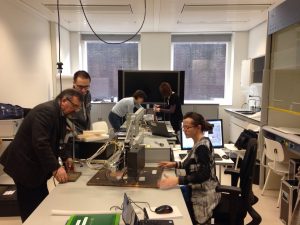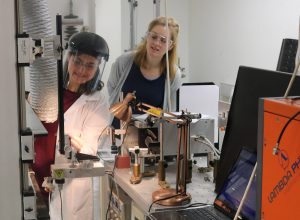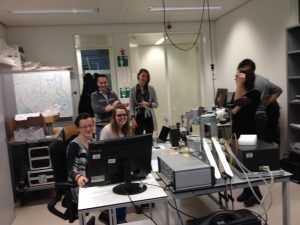An integrated approach to the monitoring of cleaning
Time, inexorably, spreads a patina over artworks. Sometimes, it is human intervention itself, especially ancient retouching and restoration, which heavily affects the original artwork’s appearance.
Fortunately, over the last decades, technologies applied to cultural heritage have made a great leap forward and nowadays scientists and conservators can easily tackle any situation however complicated it may appear.
The contemporary challenge is now to develop sophisticated, primarily non-invasive analytical research strategies to guide conservators in the assessment and evaluation of the artworks they have to work on.
And this is what we are trying to reach out with the IPERION CH project.
So, we want to tell the story of a research carried out on three 18th-20th century paintings from the reference collection of the Netherlands Institute for Cultural Heritage (RCE) and the Rijksmuseum.
The paintings were selected because of the presence of aged and degraded varnish layers and overpaint. The time had come to plan a cleaning intervention.
The aim of the research was to apply analytical techniques well known in the diagnostics of paintings but barely explored in their application to the monitoring of cleaning.
As a first step, cleaning tests were performed by a conservator, selecting cleaning solutions and methods available to conservators today, e.g. organic solvents and laser cleaning. After that, the paintings traveled between several IPERION CH partners and measurements were performed before, during and after cleaning, when possible combining several techniques at the same time.
Most of the non-invasive analysis were based on different spectroscopy techniques.
In a spectroscopy experiment, when a sample is bombarded by an electromagnetic radiation (visible light or infrared) the sample molecules absorb energy and as a result jump from a low energy ‘ground state’ to some higher energy ‘excited state’. The result is a visible spectrum which is detected by a device on the other side of the sample. As both atoms and molecules have unique spectra, these spectra can be used to detect, identify and quantify information about the elemental composition of colors and investigate the pigments used by the artist.
Analysis such as Micro-FTIR (Fourier Transform Infrared Spectroscopy or Multi-Spectral Imaging, are of paramount importance to distinguish original artworks from copies and forgeries and to highlight more recent restorations.
MA-XRF (Macro X-Ray Fluorescence) allows visualization of the distribution of elements in a flat, macroscopic sample (up to several square meters) in a non-destructive manner. Due to the penetrative nature of X-rays, elements present at and below the surface contribute to the obtained elemental distribution images, like a kind of map of elements. The method is highly valuable in the investigation of historical paintings, as elemental distribution images can reveal hidden sub-surface layers, including modifications made by the artist or restorations on the surface, providing a unique insight into the creative process of the artist(s) and the painting’s conservation history.
It is not possible to detail every single technique carried out along the experiment, but Micro profilometry is very interesting.
This technique is used to extract topographical data from a surface. This can be a single point, a line scan or even a full three-dimensional scan. The purpose of profilometry is to get surface morphology, step heights and surface roughness because once you know a surface in detail, it is possible to plan the best conservation intervention possible.
The integrated approach experimented here, is still under discussion among scientists, but it is a very important starting point.
In the long run, it is expected that the information obtained from this range of instrumentation will contribute to a better understanding of the consequences of current cleaning procedures on paintings.



